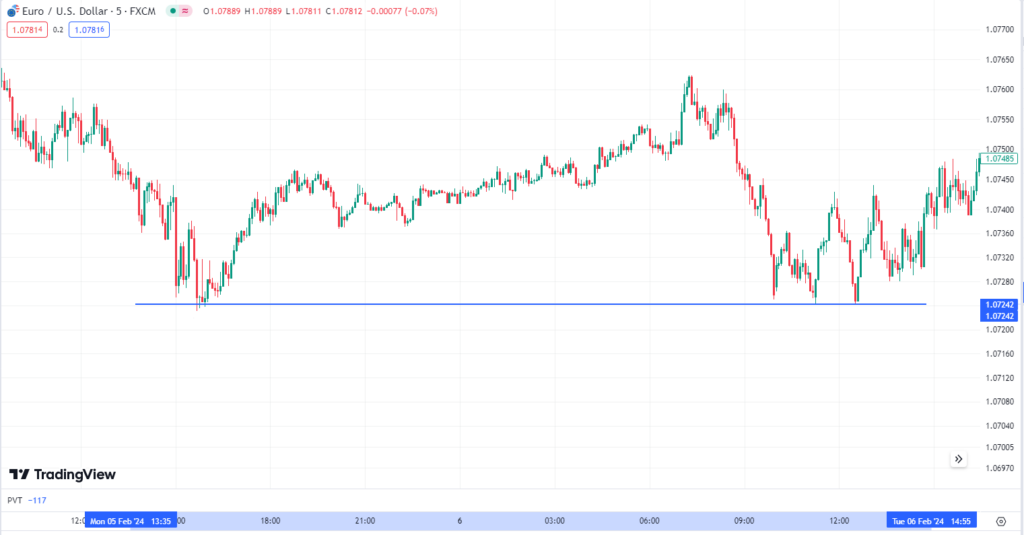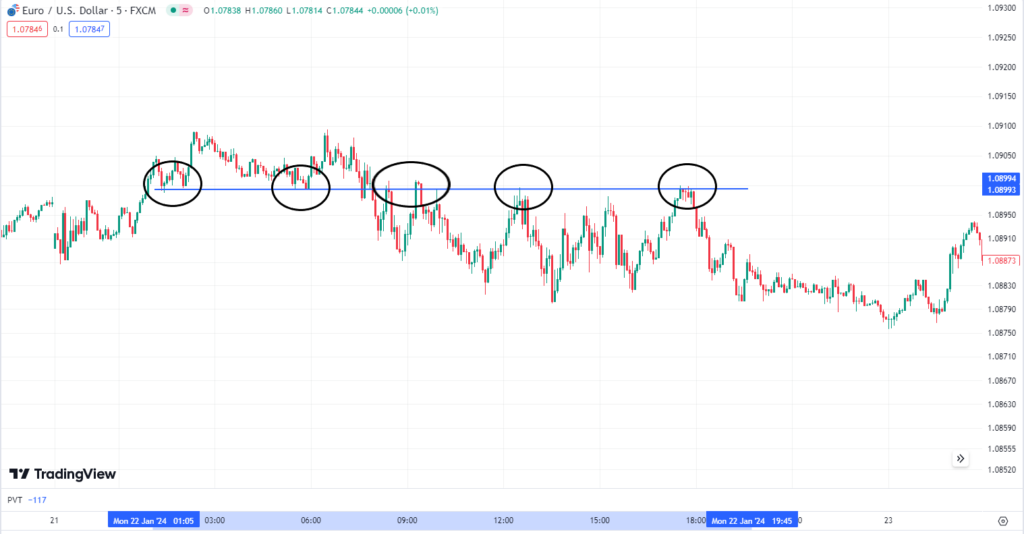Support and resistance levels are fundamental concepts in trading, applicable to both long-term investments and short-term day trading. Both levels represent points on the chart where the price tends to halt and, in some cases, reverse direction. Therefore, many traders use these as potential points for buying or selling, especially if there are other indicators suggesting a price reversal at these specific levels.
| Try our free forex signal service via Messenger: Click here |
Below is an example of the Euro-Dollar price on February 06th, 2024, where the price around 1,0724 acts as a support level, thus becoming a buying opportunity for many traders.

Very few successful traders rely exclusively on support and resistance points for their buying and selling decisions, but for many, these levels serve as contributing factors when making significant choices. It’s important to note that the more frequently a support or resistance level is tested, the stronger it becomes. Conversely, when a resistance level is finally breached, the price can break down much further.
| Try our free forex signal service via Messenger: Click here |
Many beginners in day trading are tempted to trade price breaks, for example, going short immediately if a support level is breached. In most markets, this strategy is quite risky, as small false breakouts are common, where a support level is briefly breached but then reverses. Therefore, traders should be cautious about employing this strategy.
Resistance levels function in the same way, just in the opposite direction. These are levels that the price has repeatedly hit without being able to break through. If you’re looking to buy into a market, it’s important to be aware of any “ceiling” the price keeps hitting, as this can make it less likely for the trade to be successful.
Another well-known phenomenon related to support and resistance is that support can often turn into resistance. An example of this can be seen below.

One explanation for this phenomenon is that when an established support level is broken, many traders will initially want to go short, but some may not manage to do so in time. When the price then returns to the old level, it becomes a natural point for them to short the market. This collective action can turn the previous support level into a new resistance level, as traders act on their initial inclination to sell, reinforcing the level’s significance in the market’s dynamics.